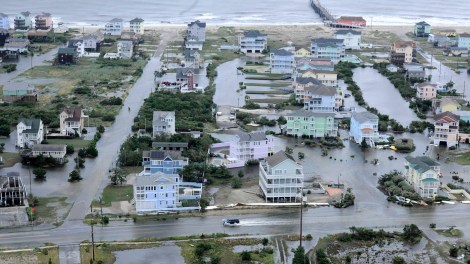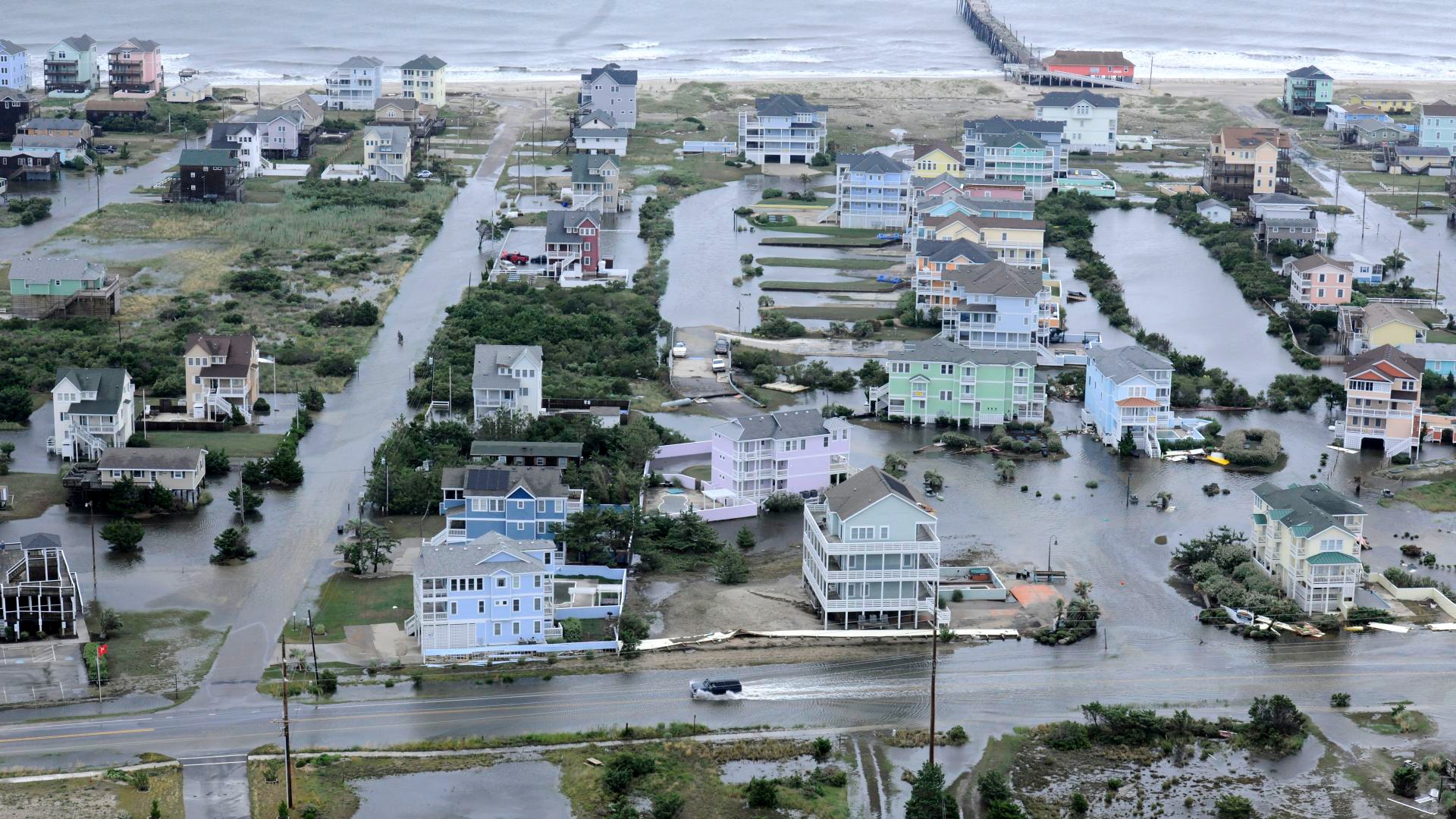
U.S. Coast GuardFlooding caused by Hurricane Arthur on the Outer Banks of North Carolina.
Hurricane Arthur is no more than a holiday-dampening memory in the minds of many East Coast residents and visitors. But the 4.5-foot storm surge it produced along parts of North Carolina’s shoreline on July 4 was a reminder that such tempests don’t need to tear houses apart to cause damage.
As seas rise, shoreline development continues, and shoreline ecosystems are destroyed, the hazards posed by storm surges from hurricanes are growing more severe along the Gulf Coast and East Coast.
Two soggy prognoses for storm-surge vulnerabilities were published on Thursday. A Reuters analysis of 25 million hourly tide-gauge readings highlighted soaring risks in recent decades as sea levels have risen. Meanwhile, a company that analyzes property values warned of the dizzying financial risks that such surges now pose.
First, here are highlights from the Reuters article:
During the past four decades, the number of days a year that tidal waters reached or exceeded National Oceanic and Atmospheric Administration flood thresholds more than tripled in many places, the analysis found. At flood threshold, water can begin to pool on streets. As it rises farther, it can close roads, damage property and overwhelm drainage systems. …
The trend roughly tracks the global rise in sea levels. The oceans have risen an average of 8 inches in the past century, according to the 2014 National Climate Assessment. Levels have increased as much as twice that in areas of the Atlantic and Gulf coasts where the ground is sinking because of subsidence — a process whereby natural geological forces or the extraction of underground water, oil or gas cause the ground to sink.
The most dramatic increases in annual flood-level days occurred at 10 gauges from New York City to the Georgia-South Carolina border, a stretch of coast where subsidence accounts for as much as half the rise in sea level in some locations, according to U.S. Geological Survey studies.
Also on Thursday, data and analytics firm CoreLogic published its annual storm surge report — a document that’s based on data produced for the insurance company. The firm’s latest analysis concluded that 6.5 million homes are at risk of being damaged by a category 1 hurricane’s storm surge. About 3.8 million of those homes are along the Atlantic Coast and the rest are along the Gulf Coast. Florida and Texas are most at risk. Rebuilding all of those homes would cost an estimated $1.5 trillion, the company’s analysts concluded.




